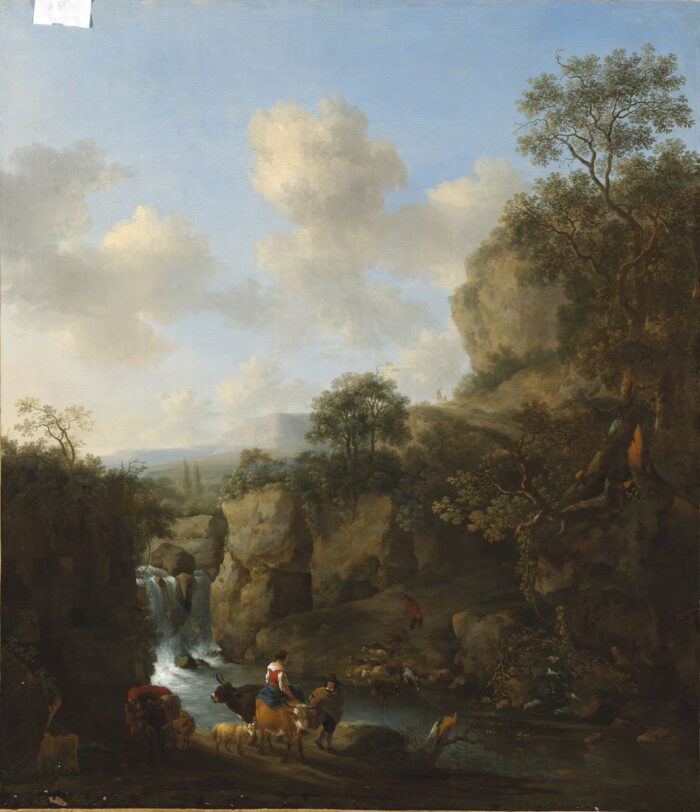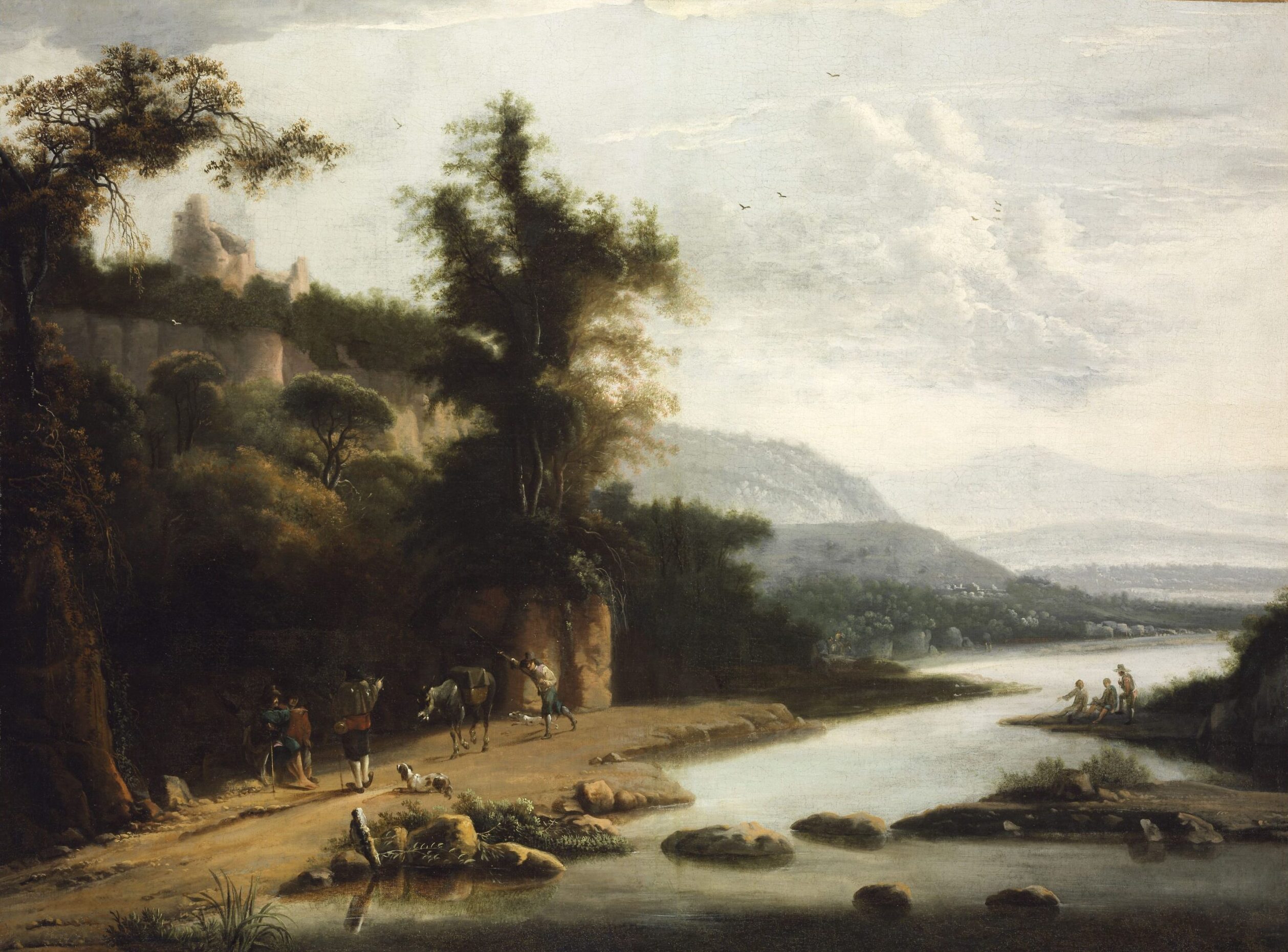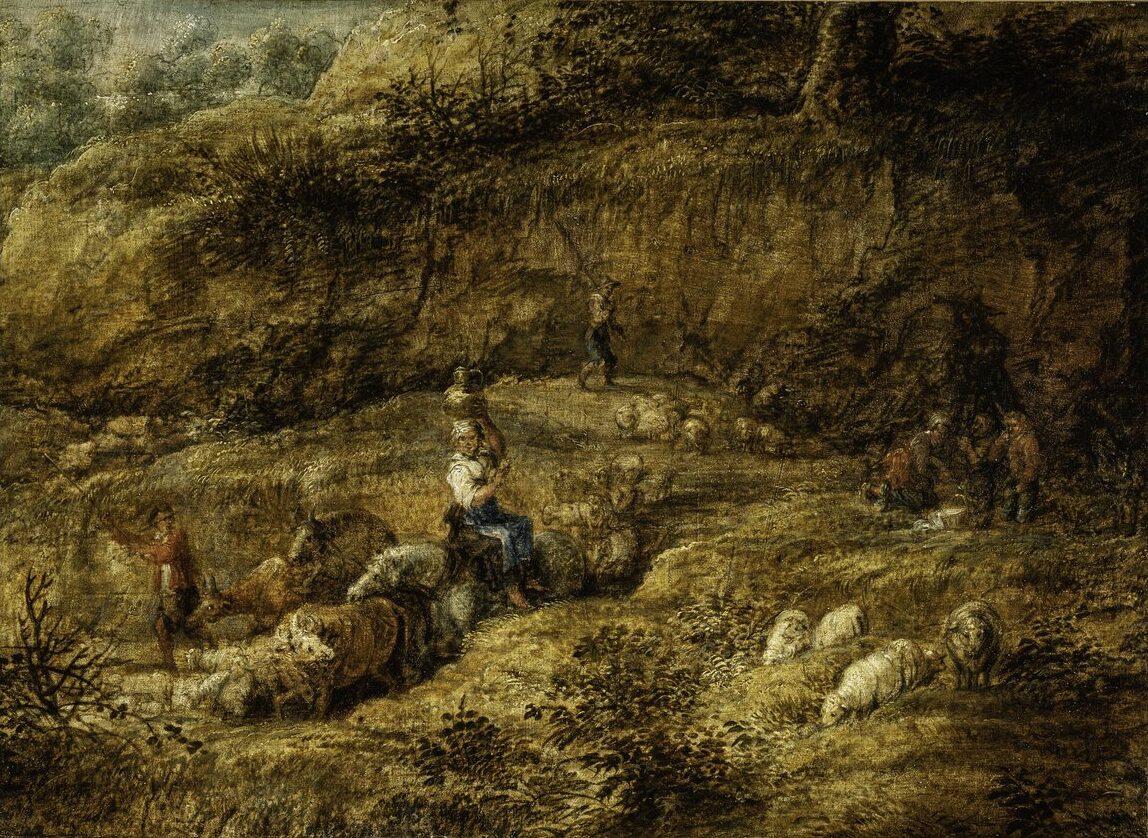As part of a long-term cataloguing project, initiated and carried out by Dr. Ildikó Ember, the Szépmüvészeti Múzeum (Museum of Fine Arts) in Budapest will shortly publish the third volume in its series Old Masters’ Gallery Catalogues: Dutch and Flemish Paintings 1600-1800. The first two parts, which appeared in 2011, dealt with portraits and still lifes. The new volume will be devoted to the Dutch and Flemish landscape paintings in the museum’s collection. Over the years, the RKD – Netherlands Institute for Art History in The Hague has contributed to this ambitious project in various ways. In the case of the portraiture catalogue, the RKD’s former director Dr. Rudi Ekkart conducted the necessary research as well as writing the texts. For the volume on still life painting, Fred G. Meijer, former senior curator of Old Netherlandish Painting at the RKD, acted as advisor and co-author. Both catalogues yielded many new interpretations, attributions, and insights, based on the most recent state of research and incorporating the results of technical examination.
In 2021, Ildikó Ember again sought collaboration with the RKD, this time to compile the catalogue on the museum’s landscape paintings. Former RKD curator Marijke de Kinkelder had visited Budapest and studied these paintings some twenty years earlier. Documenting her observations, she made many suggestions for alternative attributions and dates. De Kinkelder having retired from the RKD in 2013, Ember asked her successor, Ellis Dullaart, to take on the role of advisor, editor, and co-author. Ember herself conducted the lion’s share of the research and writing, drawing on the expertise she had built up in her long and impressive career at the Szépmüvészeti Múzeum. Dullaart subjected her entries to critical review and wrote texts on those paintings for which she was able to propose new attributions. She was also responsible for copy-editing the English translation and for image editing. Once the catalogue is published, the most important new findings will be included in the RKD images database. This will provide further access to the information within the RKD’s database context, linking the Budapest paintings to data on other artworks, artists, and collectors.
The collection
The Old Master Painting Department of the Szépmüvészeti Múzeum manages its European paintings from various national schools. The collection was formed by combining holdings from the National Picture Gallery, the National Museum, and several aristocratic and ecclesiastical collections. The paintings by Dutch and Flemish masters from the sixteenth to eighteenth centuries – almost 900 works in total – constitute an indisputable highlight of the collection, both in number and in quality. They include a great variety of genres, featuring major masterpieces by leading masters as well as unique paintings by lesser-known artists. The landscape section itself is equally diverse, ranging from earlier Flemish “world landscapes” to typically Dutch views of woods, dunes, riversides, coasts, and cities, as well as idealized Italianate scenes and southern ports.
The core of the museum’s collection of Dutch and Flemish paintings was formed by the artworks acquired from the Esterházy family, most of which were purchased by the Hungarian state in 1870-1871. That collection contained no fewer than 87 Dutch and Flemish landscape paintings, and the character of the museum’s landscape holdings is still defined by the diversity of the Esterházy works. The collection continued to expand under the leadership of successive directors. Gábor Térey, director of the museum from 1904 to 1926, merits a special mention for his role in enriching the holdings with over 300 paintings, 33 of which being landscapes. Several of these were donated by two leading Hungarian collectors in 1906: György Ráth and Jenő Zichy. Another significant addition was the Pálffy bequest in 1912. After the Second World War, a further 46 Dutch and Flemish landscape paintings were added to the collection through gifts and purchases. Until fairly recently, the museum only purchased artworks that were already in Hungary. Knowing this, it is more astonishing still to see how many first-class landscape paintings it was able to acquire. Clearly, the genre was not only beloved by aristocratic collectors but also suited the tastes and financial means of the middle classes – just as it had in the seventeenth century.

Fig. 1 Salomon van Ruysdael (1600/1603-1670), Travelers Before an Inn with a Maypole, 1664
Szépmüvészeti Múzeum, Budapest
Today, the collection of Dutch and Flemish landscape paintings from the late sixteenth to early eighteenth centuries numbers 231 works by approximately 100 artists. Almost 190 of these were made by artists from the Northern Netherlands, the rest being of Southern Netherlandish origin. Salomon van Ruysdael is the artist best represented, with 10 paintings (fig. 1). He is followed by Aert van der Neer (6 paintings), Hendrick Mommers and Cornelis Gerritsz Decker (5), and Frederick de Moucheron, Allaert van Everdingen, Theobald Michau, Simon de Vlieger, Jacob van Ruisdael, and Jan van Goyen (4). Besides those already listed, the collection also holds artworks by the other major masters: Jan Breughel (I), Aelbert Cuyp, Meindert Hobbema, Hendrick Avercamp, Nicolaes Berchem, and Philips Wouwerman. In addition, it has important pieces by lesser-known painters, some of which are key to forming an idea of these masters’ oeuvres. This applies, for instance, to Abraham de Cooge, whose Italianate Landscape is the only extant signed piece by his hand (fig. 2). Also noteworthy are the rare pair of signed Menageries by Nicolaes de Vree, four works by Jan van Ossenbeeck that provide a representative overview of his output, a View of Cologne that was attributed to Jan de Vos (II) by former RKD director Sturla Gudlaugsson, and a river landscape bearing a CH monogram which Marijke de Kinkelder recognized as a work by Claes Hals.
Approach and results

Fig. 3 Attributed to Abraham Begeyn (1637-1697), Italianate Landscape with a Waterfall
Szépmüvészeti Múzeum, Budapest
The systematic survey of the 231 paintings built on the earlier collection catalogues (1967 and 2000), as well as the museum’s unpublished files, the art historical literature, and online sources. Numerous colleagues from around the world – many of whom were contacts acquired through the CODART network – kindly provided indispensable advice in the course of our research. We critically assessed the attribution and date of each painting. We checked and expanded upon the known provenances, using the online resources that have become accessible since 2000. A good example is the painting of a landscape with swimming boys from the circle of Philips Wouwerman. It was reported as early as 1738 in the Barez collection and subsequently in auctions in 1770 and 1801. Using the Getty Provenance Index and the Art Sales Catalogues Online, we were able to reconstruct more precisely the painting’s whereabouts between 1770 and 1801 and to identify it in another sale, in 1804, narrowing down the period in which Esterházy could have acquired it to 1804-1812.
Besides this traditional art-historical approach, each painting has been technically evaluated, and information on its restoration history was summarized from the museum’s files. About 20 paintings have been cleaned, restored, or technically analyzed by the museum’s conservation department. In many cases, we commissioned new digital high-resolution photographs of paintings, as well as of details of signatures, the backs and relevant labels, inscriptions, and wax seals. These images will be included in the catalogue, providing a comprehensive documentation of the paintings.
This systematic, critical approach resulted in 29 new or revised attributions. A case in point is the Italianate Landscape with a Waterfall, which had been lost in the war and was recovered in 2014 (fig. 3): Dullaart was able to propose Abraham Begeyn as the artist. In 1812, while still in the Esterházy collection, it had been described as a work by Johannes van der Bent. Later on, it was given to Nicolaes Berchem. Close comparison with the accepted oeuvre of Begeyn, however, showed so many convincing similarities that an attribution to this master now appears very plausible. Another new identification was proposed by Ember. The fairly large Landscape with a River had formerly been attributed variously to Karel du Jardin and Justus van Huijsum, but since 1967 it had been published as an anonymous work (fig. 4). Studying the 2006 catalogue raisonné on Willem van Bemmel by Wolf Eiermann, Ember found many stylistic similarities with the Budapest painting and convincingly assigned Landscape with a River to this Utrecht-born master.

Fig. 4 Attributed to Willem van Bemmel (1630-1708), Landscape with a River
Szépmüvészeti Múzeum, Budapest
Perhaps the most spectacular discovery, partly based on technical analysis, was the Landscape with Shepherds, which once belonged to the Ráth collection. Ever since it surfaced on the art market in 1872, scholars have been debating its attribution. It has been called “manner of Rembrandt” and “18th-century English” and Max J. Friedländer is said to have proposed an attribution to Jacobus Sibrandi Mancadan. While studying digital photographs of the painting, Dullaart noticed stylistic and compositional similarities to the work of the Antwerp landscape painter Lucas van Uden. The painting’s extensive underdrawing, which clearly shimmers through the paint layers, had already been documented in an infrared photograph and proved to be a useful aid. Comparison with an infrared reflectography of another Van Uden painting – documented in the RKD Technical database – showed a strikingly similar use of underdrawing, characterized by a confident and quick handling, heavy and repetitive hatching, and loose scribbles to indicate foliage and soil. These observations led us to conclude that the Budapest painting is clearly linked to Van Uden’s work and that it very likely originates from his studio. Greater certainty about its authorship will only be achieved through further research on Van Uden’s artistic practice and the technical properties of his artworks.

Fig. 5 Attributed to Lucas van Uden (1595-1672), Landscape with Shepherds
Szépmüvészeti Múzeum, Budapest
Unfortunately, not all the paintings have yet been satisfactorily attached to an artist’s name. Some ten unsolved cases still remain. Although some of these are of rather modest painterly quality, others are attractive pieces that deserve to be attributed. One such is Path to the Brook from the Esterházy collection (fig. 6), which has previously been published variously under the names of Adam Pijnacker, Jan Both, and Jan Hackaert and is currently listed as an anonymous work by a Dutch Italianate painter. We would very much welcome any useful suggestions from the CODART community to solve this conundrum.
As we near the end of our collaborative project, we want to emphasize the importance of systematic cataloguing campaigns of this kind. Besides new discoveries regarding individual artworks, the research has led to a wider understanding of the nature of Szépmüvészeti Múzeum’s collection of Dutch and Flemish landscape paintings as a whole, as well as of the museum’s collecting history. In addition, the partnership between an established authority on Netherlandish art and an art historian from a younger generation has proved to be extremely fruitful, enabling the transfer, exchange, and retention of knowledge across generations, institutions, and countries. Since the long-term collaboration between the Szépmüvészeti Múzeum and the RKD is deeply rooted in the CODART network, the catalogue’s publication should also be seen as a successful result of CODART’s ongoing endeavor to encourage and strengthen cooperation among its members.
Ellis Dullaart is Curator of Dutch and Flemish Old Master Painting at the RKD – Netherlands Institute for Art History in The Hague. She has been a member of CODART since 2013. Ildikó Ember was formerly Head of the Department of Old Master Paintings at the Szépmüvészeti Múzeum in Budapest. She was a member of CODART from 1998 to 2023.


